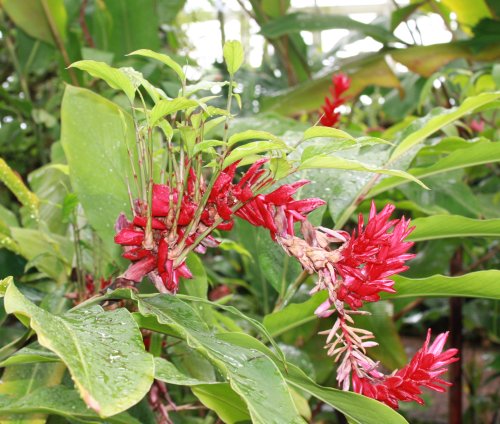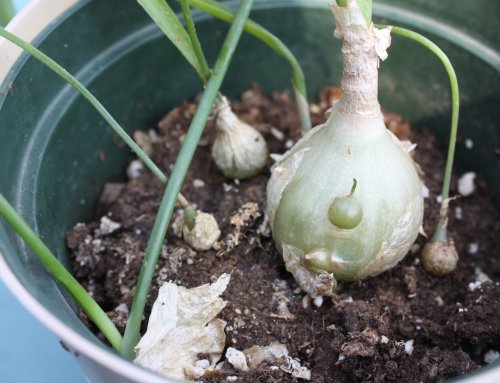Some plants have a unique way of "giving birth" to their offspring that is called vivipary. The difference between these viviparous plants and those that scatter seeds is that the new plant begins to grow while still attached to the parent plant. Here are some examples:
 |
| Walking Iris (Neomarica gracilis) bloom with plantlet forming |
The Walking Iris
Neomarica gracilis (pictured above) is so named because of it's propagation habit. Most Iris bloom on stems that only include flowers. The Walking Iris blooms from the ends of it's normal leaves. Usually several blooms follow in succession over a period of a couple of weeks. All the while, a new plant is forming at this junction. The weight of the new plant at the end of this leaf blade will make contact with the ground, where the new plant will establish itself. This is similar to the common houseplant called Airplane or Spider plant
Chlorophytum comosum (pictured below).
 |
| Spider plant (Chlorophytum) plantlet |
Some gingers (like the one pictured below) produce flowers that are pollinated and produce seed, which immediately germinates and begins to grow on the plant, weighing down the stem until it is upon the ground, where the new plants become established. I have seen this same type of ginger demonstrating this behavior in the Oklahoma City Myriad Gardens and in Jamaica - a more natural habitat.
 |
| Ginger at the OKC Myriad Gardens with new plantlets forming in the blooming bracts |
Now true botanical (plant) vivipary (live-birth-ness), results from seeds germinating while still on the host plant. In some of these cases, the plantlet that forms on the parent is not a result of seed germination, so it is not really true vivipary. Plants can produce new offspring in just about every imaginable way - from the roots, from the leaves, from the junction of petioles and stems - pretty much every piece of plant anatomy is used for propagation by some plant species. Surely not all of this is viviparous behavior, right?
I'm not a botanist, but I try to understand some of the terminology. There is a condition which is called pseudovivipary which is defined as "a condition in which vegetative propagules replace some or all of the normal sexual flowers in the inflorescence." To me, this means that a plant is able to produce new plants without necessarily producing flowers, seed, etc. A good example of this might be the Pregnant Onion, which produces new plants within the "skin" of it's bulb. As the new plants mature, they will fall away from the parent plant become independent. At which point the parent bulb cries "They grow up so fast!"
 |
| Pregnant Onion (Ornithogalum longibracteatum) with many baby plants |
I had actually planned to write about this since I read this term in a book I read a couple of months ago. Then I saw that Derek had posted about this same topic on
Plantgasm. He beat me to it, but it also gives me a good reason to link to his blog, which I really enjoy. Derek has some great
time lapse presentations of different plants producing new leaves (including aroids) or flowers opening. I highly recommend you check them out!
Do you know of any other plants that demonstrate viviparious behavior?




I know of a few others-
ReplyDeleteKalanchoes
Piggy back plants (i dont know the scientific name)
Daylilies, and some other lilies make bulbils on the leaves.
Xanthosoma viviparum
Tillandsia, and some other Broms.
Amorphophallus very commonly create intercalary bulbils which after the leaf dies down for the season come in contact with the ground and can grow a new plant.
ReplyDeleteEpiscias also form stolons that when pinned to the soil will root readily. I also have a chirita called longangensis. It also will develop stolons.
ReplyDelete